Antique Imperial Russian Royalty Nobility Armorial Wax Seal Stamp Royal Matrix
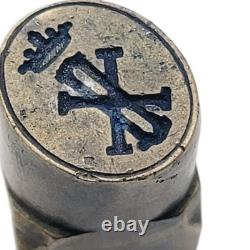


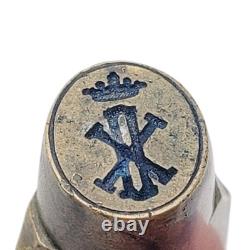

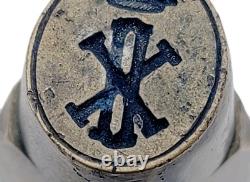
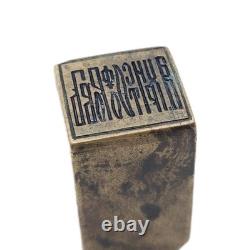


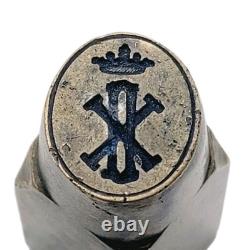

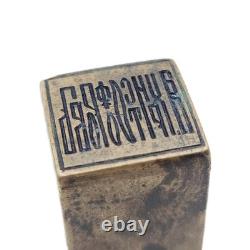

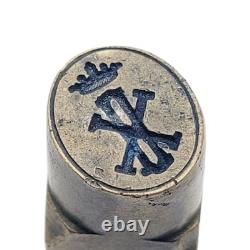
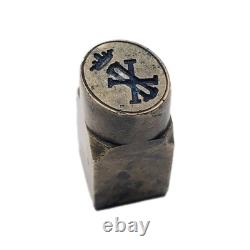

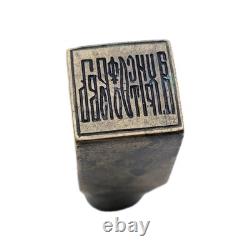
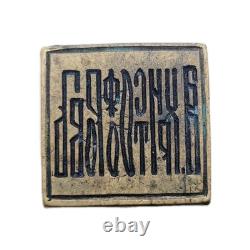
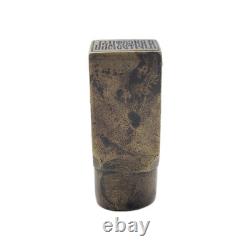
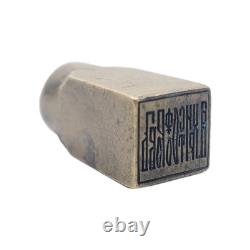
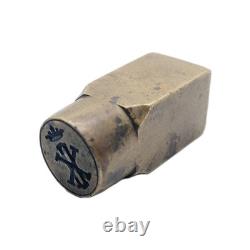
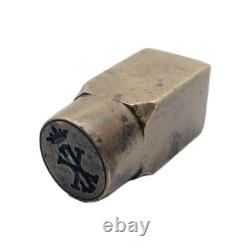

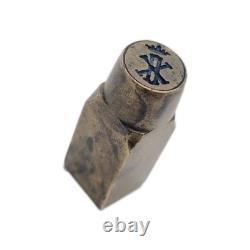

This extraordinary and entirely handmade artifact is a genuine relic of aristocratic authority within the Russian Empire or greater Slavic nobility, preserved in remarkable condition with its original untouched patina. Crafted in solid brass or bronze, the seal weighs 124 grams and measures 44mm in height, with a face width of 19mm and a rare double-sided oval seal matrix approximately 17 by 20mm. Every element of this seal-from its finely engraved monogram to its deep, crisp inscription-attests to its importance as a personal symbol of noble power and prestige.
One face of the seal bears a beautifully intertwined Cyrillic monogram "?? ", depending on orientation, representing the noble owner's initials-possibly Pavel Kh.
The monogram is topped with a finely detailed noble coronet, composed of raised pearls set upon a circlet band, a heraldic symbol typically used by counts, marquises, or barons within the Russian imperial nobility. This crowned monogram would have served as a personal emblem of rank and lineage, identifying its owner as a titled aristocrat-most likely a landholder, courtier, or military officer under the imperial government of Elizabeth I. The reverse side of the matrix bears a full Cyrillic inscription engraved in reverse: "????????????????????This naming convention, comprising both first name and patronymic, was used among the noble and gentry classes of Russia and Eastern Europe. The presence of the hard sign "? " at the end of each name affirms the pre-revolutionary orthography of the piece, placing it firmly within the cultural and linguistic context of mid-18th century Russia. The sharply incised block letters would have left authoritative impressions in red or black sealing wax, used for estate letters, legal petitions, or official correspondence.
Created during the elegant and reformative era of Elizabethan Russia-a period noted for its opulence, Baroque court culture, and the strengthening of noble privileges-this seal represents not only a unique genealogical link to an individual aristocrat named Vladislav Franchevich, but also a broader cultural artifact of imperial identity and personal sovereignty. With its dual-face matrix, crisp preservation, and clear monogram-crown heraldry, this wax seal stamp is a one-of-a-kind museum-quality relic of noble life in the age of Russian Enlightenment. Authentic, correct, and historically unparalleled.

